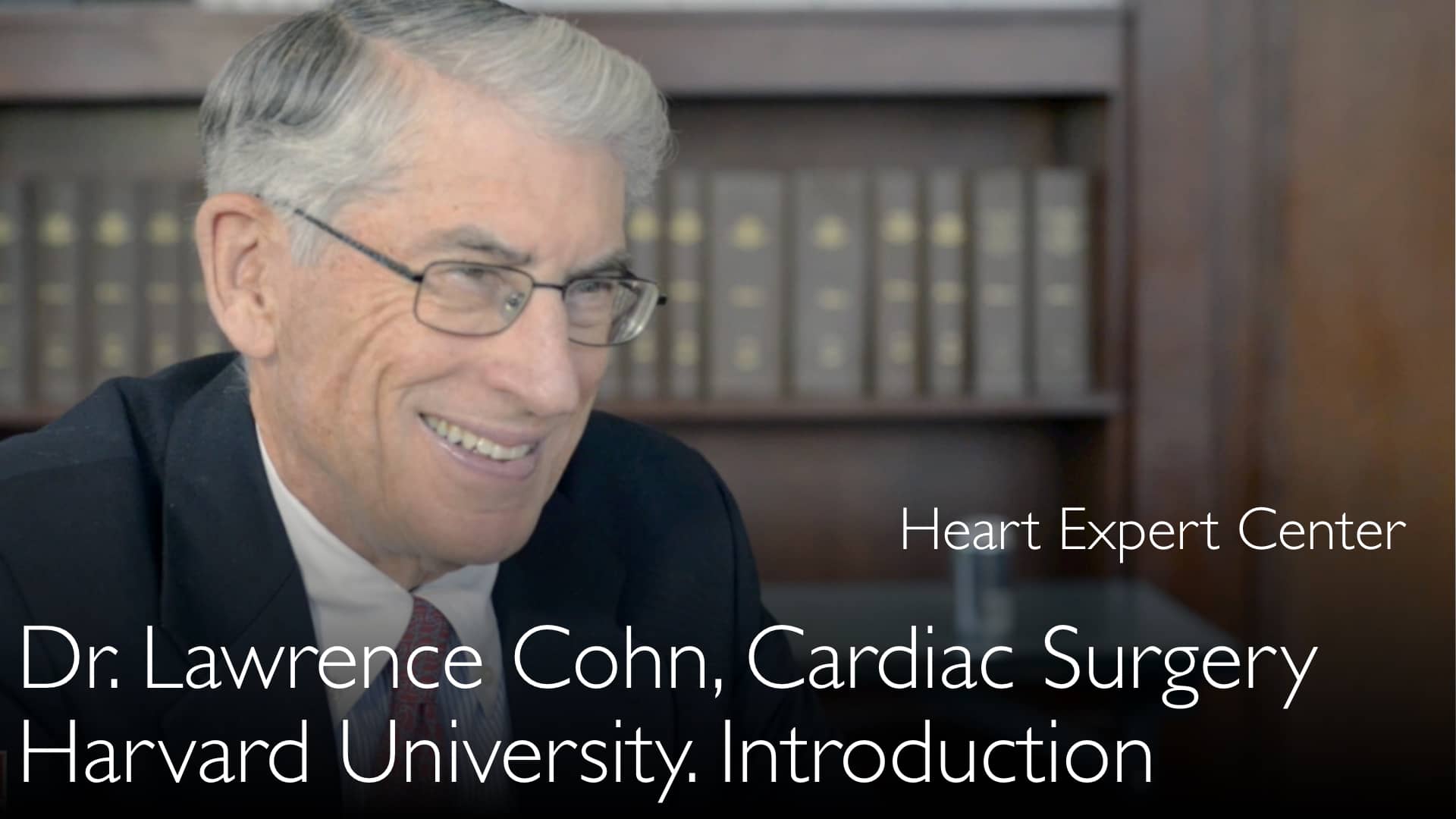Leading expert in minimally invasive cardiac surgery, Dr. Lawrence Cohn, MD, explains how minimally invasive heart valve surgery for conditions like aortic stenosis and mitral valve prolapse significantly improves patient recovery times and outcomes compared to traditional open-heart surgery, based on pioneering clinical studies he conducted.
Minimally Invasive Heart Valve Surgery: Benefits, Recovery, and Patient Outcomes
Jump To Section
- Pioneering Minimally Invasive Cardiac Surgery
- Evolution of Surgical Standards
- Clinical Outcomes and Patient Recovery
- Comparative Study Results
- Adopting New Surgical Techniques
- Treatment of Choice for Valve Disease
Pioneering Minimally Invasive Cardiac Surgery
Minimally invasive heart valve surgery was pioneered by cardiac surgeon Dr. Lawrence Cohn, MD, who began developing these advanced techniques in 1996. The initial focus was on patients with isolated valve problems, such as aortic valve disease or mitral valve prolapse, who did not have complicating factors like coronary artery disease. Dr. Cohn's innovative approach involved creating an incision that was only half the length of the standard sternotomy used in traditional open-heart surgery.
Evolution of Surgical Standards
The evolution of surgical standards for valvular heart disease treatment was driven by the broader adoption of minimally invasive methods across all surgical specialties. Dr. Lawrence Cohn, MD, and his team adapted these principles to cardiac surgery, specifically for aortic valve replacement. They demonstrated that a much smaller incision, just one-third the size of the standard one, provided adequate visibility and access to perform a standard aortic valve operation safely and effectively.
Clinical Outcomes and Patient Recovery
The primary goal of developing minimally invasive heart valve surgery was to achieve better clinical outcomes for the patient. Dr. Lawrence Cohn, MD, emphasizes that the main purpose of the minimally invasive method is to help patients recover faster and return to their normal daily lives and work more quickly. This patient-centric benefit became the cornerstone for advocating this surgical approach over traditional methods.
Comparative Study Results
To objectively validate the benefits, Dr. Cohn's team conducted a rigorous comparative study. A nurse, blinded to the surgical method, phoned 100 patients who had undergone minimally invasive surgery and 100 patients who had the standard operation. The results were clear: patients who had the minimally invasive procedure reported a much faster recovery, a quicker return to work, and an overall better feeling of well-being in a shorter time frame.
Critically, the study also confirmed that the mortality rates and the functional performance of the new heart valves were identical between the two groups. This proved that the new technique was not only beneficial for recovery but was just as safe and effective as the established standard of care.
Adopting New Surgical Techniques
Dr. Lawrence Cohn, MD, offers crucial advice to young surgeons interested in new techniques. He states that while innovation is encouraged, a new surgical method must be proven to be as good as, or better than, the old technique before it can replace it. This requires careful observation and study of a large number of operations to ensure patient safety and efficacy are never compromised.
This principle, explained by Dr. Cohn to Dr. Anton Titov, MD, during their discussion, is fundamental to responsible surgical advancement. It ensures that patient benefit remains the primary driver for adopting any new technology or procedure.
Treatment of Choice for Valve Disease
As a result of this pioneering work and subsequent studies, minimally invasive surgery has become the treatment of choice for common valvular heart diseases like mitral valve prolapse and aortic valve stenosis. The technique offers a significant advantage by reducing the physical trauma of surgery, which directly translates to less pain, shorter hospital stays, and a faster return to normal activity for patients.
The conversation between Dr. Anton Titov, MD, and Dr. Lawrence Cohn, MD, highlights how this evolution in cardiac surgery has fundamentally improved the patient experience for those requiring life-saving valve repairs and replacements.
Full Transcript
Dr. Lawrence Cohn, MD: Minimally invasive surgery for valvular heart disease is possible. It has become the treatment of choice for mitral valve prolapse and aortic valve stenosis.
Dr. Anton Titov, MD: You are one of the pioneers of minimally invasive cardiac surgery, especially surgery of heart valves.
Dr. Lawrence Cohn, MD: Yes, right.
Dr. Anton Titov, MD: What were the changes in standards of heart valve surgery during the recent decade? What is the current surgical method to treatment of diseases of aortic and mitral heart valves?
Dr. Lawrence Cohn, MD: We started doing minimally invasive heart surgery for this reason. Use of minimally invasive techniques was increasing in all areas of surgery. Minimally invasive methods exist in general surgery, in orthopedic surgery and in all subspecialties of surgery.
We started doing first minimally invasive cardiac surgeries in 1996. It is a small incision heart operation. Our first patients had only isolated heart valve problems. These patients did not have other heart problems. They did not have coronary artery disease, because this would prevent minimally invasive method of surgery.
We started to do minimally invasive heart valve surgery by doing the incision half as long as a standard incision. We started by treating aortic heart valve disease. We found that we could see the aorta. We could do standard aortic heart valve replacement, but incision we did was just one third of size of the standard incision.
The reason why we started doing minimally invasive heart valve surgery is this. It is because we thought it would be better clinical outcomes for the patient. After we did operations on our first 100 patients, we wrote a scientific article. We presented our work at the meeting of American Surgical Association.
The nurse, who still works here, phoned 100 patients who had minimally invasive heart valve surgery through a small incision. She also phoned 100 patients who had surgery via standard length incision. The nurse did not know which patient had which type of surgery.
We found that patients who underwent minimally invasive heart surgery recovered much faster. Patients returned to work faster. They generally felt a lot better faster. So the main purpose of our minimally invasive surgical method is to help patients do better and recover faster.
We compared 100 minimally invasive heart valve surgeries and 100 results of standard classical method. Then we decided that minimally invasive technique is better. We continued to use it, because the results and mortality of patients were the same between two heart surgery methods. New heart valves worked well.
I tell young surgeons that. It is fine if they want to try a new technique of surgical operation. But after some time passes, surgeons have to ensure that new technique is as good or better for the patient than the old technique of operation. Then they can replace old surgery method with new minimally invasive surgery method. They have to observe a large number of operations with new technique.
Dr. Anton Titov, MD: This is fundamentally important. Minimally invasive surgery for valvular heart disease. Mitral valve prolapse, aortic stenosis—minimally invasive surgery allows faster and better recovery.





